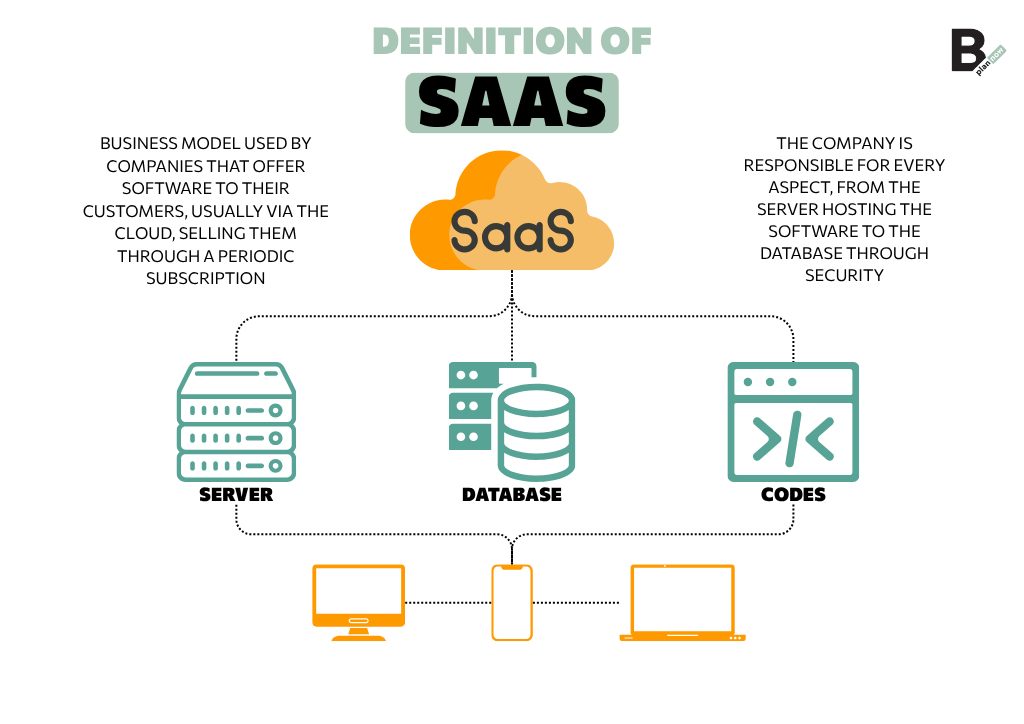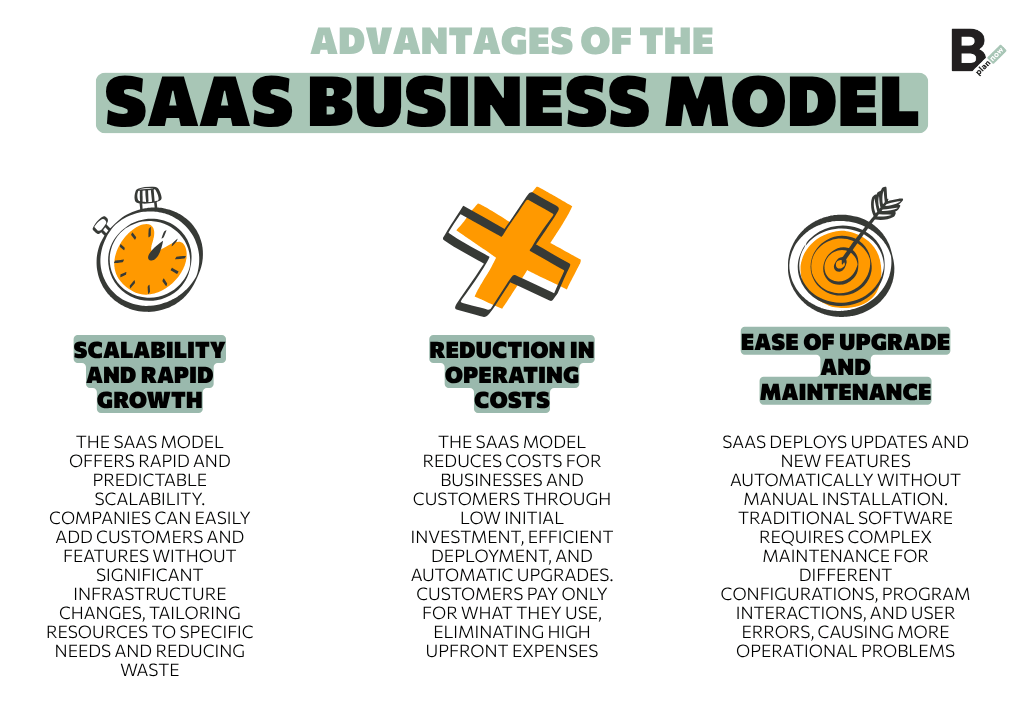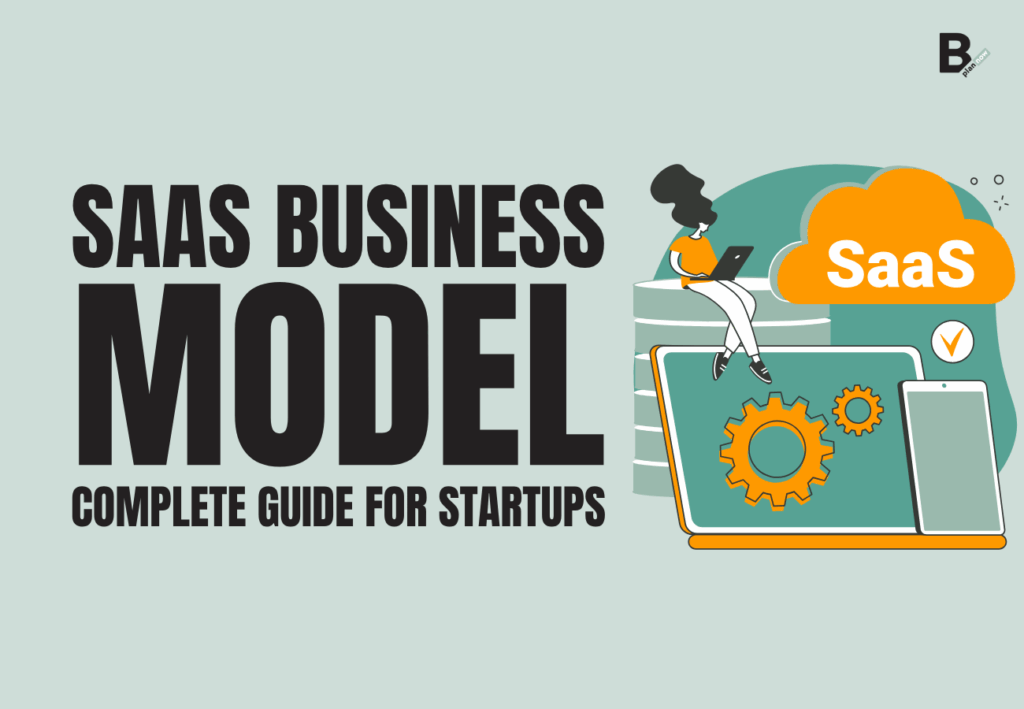If your startup deals with software, you can’t afford not to know about the SaaS business model, now one of the most widespread. In this guide, you will find a precise and comprehensive definition of the business model known as Software as a Service, with its main features and advantages, as well as a detailed explanation of how to start a SaaS business model and how it works. Finally, we will provide a list of mistakes to avoid and a list of useful tips and resources for you and your startup.
What is the SaaS business model?
To understand what the SaaS business model is and how it differs from more traditional models, we need to start with its meaning.
Definition and main features
The definition of the SaaS business model is relatively recent: the term SaaS, or Software as a Service, was coined in March 2005 by John Koenig at the SDForum Software as a Service Conference. However, it is important to note that in just 20 years, this particular sector has grown exponentially.

Software as a Service is a business model used by companies that offer software to their customers, generally via the cloud, selling it through a periodic subscription that can be monthly or annual.
Differences between SaaS and traditional models
In practical terms, the SaaS business model requires the software to be hosted and managed centrally and licensed to customers only for the period for which the subscription has been taken out. Unlike traditional software, which is installed locally, SaaS software is accessible via the Internet with a subscription.
The company is responsible for every aspect, from the server hosting the software to the database and security, so the user does not have to worry about practical issues such as installation, maintenance, and system updates.
Advantages of the SaaS business model
The SaaS business model offers numerous advantages to those who decide to adopt it, which is why it is the preferred business model for software companies today. Among the main benefits, three stand out.

Scalability and rapid growth
Scalability is one of the advantages that most appeals to software companies. The SaaS business model is specifically designed to scale quickly. Growth is fast (as well as more predictable) and, as the business grows, it has the ability to add customers or implement new features without the need for significant changes to the infrastructure. The ability to easily increase or decrease resources according to specific business needs also reduces waste.
Reduction in operating costs
The flexibility that characterizes the SaaS business model also allows businesses to reduce costs, as they can adapt to growing demand without having to make a particularly high initial investment. Savings are also linked to lower distribution costs and efficient updates.
Customers also save money when they choose SaaS software because they do not need to incur high initial costs and only pay for what they actually use over time.
Ease of updating and maintenance
We mentioned earlier the efficiency of centralized updates for SaaS software. To this we must add the ease of updating: updates and new features are distributed automatically without requiring customers to manually install anything.
There is another aspect to consider: traditional software that is installed on users’ hardware devices also causes more maintenance problems, linked to the different configurations of the various systems, interactions with other installed programs, and errors made by users.
How a B2B SaaS Business Model Works
In the following lines, we will take a closer look at how a B2B (Business to Business) SaaS business model works: it basically consists of offering software via the Cloud to other companies, which subscribe to access the service (instead of purchasing a license and installing it on their servers) via the Internet. The provider takes care of all aspects related to the management, updating, and maintenance of the software, relieving the service user of any technical tasks.
Features of SaaS for businesses
The main features of SaaS for businesses are as follows:
- Subscription-based offering
- Cloud infrastructure
- Access to the service via the Internet
- Scalability
- Flexibility
- Updates and maintenance provided by the SaaS provider
- Predictable costs and revenues.
Pricing strategies and subscription models
The SaaS business model allows you to take advantage of different revenue streams, starting, of course, with subscriptions (the most common revenue stream).
In terms of pricing strategies, a fixed price (monthly or annual) or a usage-based price can be charged. Different pricing plans can be offered, with limits on usage, functionality, or the number of connected users. Another option is the freemium model (offering a basic version of the software for free with the option to access premium features for a fee).
Selling again to customers you have already established contact with is easier and less expensive than attracting new ones, which is why upselling is one of the best sales strategies available to those who adopt a SaaS business model.
Successful examples of SaaS business models
Some successful examples of SaaS business models can help you better understand what we are talking about. We have chosen three.
Slack: simplified business communication
The Slack platform is one of the best examples of rapid growth in the SaaS sector. In just a few years, this company has become a leader in business communication. How did it achieve this? By simplifying communications and reducing the role of the much-hated internal company emails in favor of a single communication environment that facilitates the search, synchronization, and sharing of messages and files.
Salesforce: Market-leading CRM
When talking about CRM, it is impossible not to mention Salesforce, the market leader. This platform is designed for companies, allowing them to better manage customer relationships and provide a better experience. The customer relationship management software is accessible via the Internet in Cloud mode, without the need to install anything and simply paying a subscription to use the service.
Zoom: reliable and scalable video conferencing
The Zoom video conferencing platform is another excellent example of a cloud-based SaaS business that can be accessed from any device via the Internet by paying a subscription fee. It offers a dynamic and intuitive environment with a simple, scalable, and secure foundation that brings people together wherever they are and enhances business communications.
How to start a SaaS startup
After a few concrete examples, it’s now up to you to move from theory on how to start a startup SaaS to practice. In the next few lines, you will find the three fundamental steps.
Identify a market niche
Identifying your niche market is what allows you to get off on the right foot when launching your SaaS startup.
In concrete terms, this means finding that specific segment of the market that has unmet needs that you can address with effective solutions. You need to analyze the market by considering industry trends and competitor behavior, and then segment the market itself, assessing the barriers to entry, growth potential, and profitability of the various niches.
Once you have found the right market niche, that is where you need to focus your startup’s resources.
Develop and test an MVP product
The next step is to develop (and then test) an MVP product. This basic version of your software must be created based on a number of considerations regarding various factors, from the specific problem you aim to solve to how you think you can do it, including the unique value proposition that sets you apart from the competition.
Once you have identified your target audience and the problem to be solved, focus on the main feature(s) and the technology to be adopted.
After you have launched your Minimum Viable Product, carefully collect and analyze feedback through surveys, interviews, and user behavior analysis.
Key metrics for monitoring growth
Monitoring the growth of your startup is the third and final (but not least) step you need to pay attention to in order to successfully launch a SaaS business.
There are a few key metrics you need to consider. The first and perhaps most important in SaaS is Monthly Recurring Revenue (MRR): this is a useful indicator for measuring predictable and recurring income on a monthly basis and, as such, allows you to assess the financial health of the startup, monitor its growth, and predict future cash flows.
Other key metrics are Customer Acquisition Cost, Customer Lifetime Value, and Churn Rate.
Common mistakes in the SaaS business model
Those who decide to launch a SaaS business model often tend to make the same mistakes. We have chosen two that you simply cannot afford to make yourself.
Underestimating customer retention
The first mistake to avoid is underestimating customer retention. Keep in mind that, compared to other models, the SaaS business model is entirely based on customer loyalty and could prove useless without effective strategies in this regard.
It’s one thing to convince a user to renew their subscription, but it’s another to constantly focus on new users and offer them monthly subscriptions that you know won’t be renewed. This would make the business model more like a one-off sales model, but with dramatically higher acquisition costs.
Ignoring user feedback
The second mistake is inevitably linked to the first: you must not ignore user feedback. Since the revenues of a SaaS business model depend on customer loyalty, relationships with customers and, in particular, the ability to listen to their needs and desires (and respond to them quickly and satisfactorily) play an absolutely decisive role.
Final tips for a successful SaaS
Before writing the word “end” on this guide dedicated to the SaaS business model, it is useful to take a little more time for some final reflections. We have more tips for you.
Build a customer-oriented team
If you want to achieve success with a SaaS startup, you must build a customer-oriented team, which should be placed at the center of your business strategies so that providing a positive experience and meeting customer expectations becomes a priority.
Remember that customer focus must involve the entire company, not just the departments responsible for direct customer relations, and that this principle must therefore be part of the company’s entire organizational culture. Also, remember the valuable words of Jason Lemkin:
“Success in SaaS does not come from selling products, but from helping customers achieve results.”
Useful resources for learning more about the SaaS model
If you would like to consult further useful resources to learn more about the SaaS business model, we recommend two books specifically dedicated to this topic: “SaaS: The Complete Guide” by Jeffrey M. Kaplan and “The SaaS Startup: How to Bootstrap Your SaaS Startup and Build a Successful Business” by Rick Chapman, which focuses specifically on startups.
Do you want to read all the articles related to the stage your startup is in?


